19 Nov Top Places to visit in Pahalgam, Kashmir
I liked Pahalgam. Well, I liked Gulmarg too. But unlike Gulmarg, people reside in Pahalgam. It is more like a village than just a tourist destination. It also means that people are warmer and more welcoming instead of constantly haggling you to hire them.
Pahalgam has many sides to it. The centre point is the Pahalgam market area that you will see as soon as you enter. It is the economic centre of the city. The town gets sparser as you move out and you will see people going around their business.
The Lidder stream will constantly follow you through almost every tourist point that you visit in and around Pahalgam. The true beauty of Pahalgam lies in the areas beyond the town, in the surrounding valleys and alpine lakes.
Pahalgam is also a great place for trekkers to stay. It is the starting point of several long and short treks to beautiful valleys and highland lakes in the area. It is also important as the first stop towards the sacred Amarnath Yatra for Hindu pilgrimages that starts in July every year.
How to reach Pahalgam
Like most destinations in Kashmir, to reach Pahalgam you need to first reach Srinagar since there is no direct way to reach Pahalgam. You can reach Srinagar via a flight that connects to a few important Indian cities or by road. There are no trains to Srinagar at the moment.
Once you are in Srinagar, you can reach Pahalgam using the following ways. Make sure you halt at Pampore and visit some of the local stores to buy local Kasmiri produce or catch the blooming saffron fields in late Autumn.
Travelling from Srinagar? Also check out our blog on the most popular things to do in Srinagar
Public transport
If you are travelling in a small group, looking for an adventure or a budget way to reach Pahalgam, you can opt for this. Although note that the journey is going to be long, so don’t rely on it on a packed itinerary.
There is a bus route from Srinagar to Pahalgam and you can check it out at the main bus station in Srinagar but that operates only once per day. A more convenient way is to travel using a shared Sumo. Although you will have to break your journey at Anantnag.
You can take shared sumo from Jan baker’s parking lot which is 1.5km from the TRC bus stand in Srinagar (location on google maps). A sumo leaves every half hour. You need to tell the driver that you intend to travel to Pahalgam so he can drop you at the point from where you can board the next shared sumo onwards (Taxi stand location). It costs around ₹170 for the full journey.
Planning a trip to Kashmir? Check out our itinerary to Kashmir for 6-9 days
Private transport
If you are travelling in a group, it is extremely convenient to just hire a private cab. Usually, you can ask for a cab at any hotel that you are staying at. But if you are in Srinagar, you can get a shared cab from a tourist taxi stand near Nehru Park.
A full-day return cab will cost you between ₹2000-3000 depending upon the vehicle. A tempo traveller can cost up to ₹5500-6000 per day. However, expect to pay steeper prices during winters where only 4×4 cars can run on certain routes with snow chains on. Check out this blog for detailed rates at the taxi stand.
How to go around in Pahalgam
Again, like most Kashmiri towns, there is no public transport inside the Pahalgam. The good thing is that Pahalgam is a small town. And if you are staying somewhere near the centre, you can cover a lot of places on foot at a slow pace.
However, the major tourist attractions are located way out of town, so you will have to hire a cab to go around anyway. If you are travelling by your own car that has a registration outside Kashmir, you will still probably have to hire a local car since outside cars are not allowed in several areas around Pahalgam.
A half-day cab that takes you around Aru valley, Betab valley and Chandanwadi will cost you ₹2100 while a full-day cab that also halts at some additional popular destinations will cost you ₹3100. Prices can vary depending upon your need and vehicle type.
When travelling short distances, you can hire ponies from numerous locals who breed them to rent them out to tourists. They can either accompany you or if you are comfortable, ride on your own. But scams regarding ponies and guides are common. Check out this article on common scams in Kashmir so that you know what to expect.
Places to see in Pahalgam
1. Avanti Swami Temple Ruins
The temple ruins are way before Pahalgam. But the reason I put it in the first place is that it will probably be the first place you visit on your journey to Pahalgam. The Avanti Swami Temple is one of the very few examples of early Hindu settlements in the Kashmir valley.
Dating back to 855-833AD, there are actually two temples built by king Awantivarman on the banks of river Jhelum. One was dedicated to Shiva and another to Vishnu. In fact, in subsequent years, he built several temples in the region. However, almost all of them were destroyed by Islamic invaders.
Today, only the ruins of the temples remain like most others in the area. Some parts of it are still preserved and you can see detailed sculptures of Hindu gods and goddesses on them. Avaniswami temple also seems to be inspired by the plan of Martand temple, also in ruins located 5km away.
Avantiswami temple timings: There are no official timings but a good time to go is between 9 am to 5.30 pm.
Avantiswami temple tickets: ₹15 for Indians and SAARC Nationals, ₹200 for all other Foreign tourists. There is no entrance fee for children below 15 years of age.
2. Baisaran
Baisaran is a highland valley a little before Pahalgam on your way from Srinagar. The place is popular for its wide beautiful lush green meadows that especially come alive during the summers. During winters people flock to find fields of snow to enjoy winter activities. If you are visiting in spring, you can still probably find snow-covered mountains in the background.
It is not as easy to just reach there by car and walk up to it. At the base, you will need to hire a pony that will cost you between ₹1500-2000 for a return trip, although people have received better rates on non-peak hours so negotiate hard. The pathway to the meadows is steep and not as easy to navigate at times on your own.
But if you are confident enough, you can also trek to the place that takes about 45 minutes. Make sure you wear good shoes that are preferably waterproof. There are a few restaurants at the top if you are hungry when you reach.
This path can also be used to trek ahead towards Kani Marg, Tulian Valley and Tulian Lake.
Ticket price to Baisaran: ₹30 per adult and ₹15 per child to be paid at the entrance
Love meadows? Check out our blog on Gulmarg full of wide green meadows
3. Poshwan Park
There are many beautiful parks in and around Pahalgam. Poshwan Park is just one of them. You can also skip this one for another. The park is neat, clean and well maintained by the local authorities and sits beautifully in the foreground of ice-capped mountains.
There aren’t any rare activities that you can do at the park. But if you have time, come here and spend some time. The flowers bloom from spring onwards and you will often find locals relaxing in the park with families sometimes having a picnic.
Other parks that you can visit are Lidder Park that liest just after you cross Lidder Lake and Park Umrao for which you need to cross the lake to the other side.
Poshwan Park Entry Fees: ₹24 per adult and ₹12 per child to be paid at the entrance
4. Lidder River
I don’t know if this will even count as a tourist attraction but I think you must take some time to go sit alongside the Lidder River and chill. Although, the river is anyway going to follow you at almost all tourist attractions inside and outside Pahalgam.
Lidder river is also called Lambodari river that translates to ‘a long bellied Goddess’ in Sanskrit. It is cold, fresh and flows with a force from the glaciers of Mount Kolahoi. The river travels around 30kms before it reaches Pahalgam and then subsequently merges with Jhelum.
We walked to its banks early in the morning and spent a bit of time. We were then joined by a few young local girls who were curious enough to come to us and chat with strangers. You can also pluck walnuts from random trees that grow around the river and eat them fresh.
Be careful of the flow of the river after the rainy season since the water level rises.
5. Mamaleshwar Temple
Mamaleshwar Temple is small and can be easily missed but it is significantly important for Hindus and Amarnath Yatris.
According to the legend, it is where Parvati asked her son, Lord Ganesha to keep a watch for her. And when he refused Lord Shiva to enter, he beheaded him and later gave him his elephant head. The term Mamal itself means ‘don’t go’ in the local language.
The initial temple was constructed in 400 AD and reconstructed by King Jayasikamba between 1126-1155 A.D. The inside of the temple is as small as 8 sq.ft but is home to Shiva linga. A freshwater spring is located right next to it with crystal clear water that you can drink from.
It is located right next to the Lidder River. If you are staying in town, you can take an early morning walk to this place.
6. Aru Valley
Unlike Gulmarg, Pahalgam town isn’t high on wide-open meadows. So you need to go to places like Aru valley to find them. And it is not just the valley that’s beautiful. The journey to Aru valley is also super gorgeous.
Once you reach Aru valley, you can quickly find out that it is a remote small local settlement and mostly a tourist place. One of the main attractions is the Park near the parking area that has some picture-perfect views of the valley covered in pine forests and I could compare it to the photos of Switzerland that I had seen online.
During the summers the place is rich green and the glaciers turn into fluid waterfalls visible all over the place. We took the opportunity to get dresses in local Kashmiri dresses and do a super-cheesy photoshoot.
From the park, you can either trek (if you are used to trekking at this altitude) or rent ponies with guides that take you to another meadow a little way up. The journey lasts 20 minutes.
If you want to stay in Aru valley and explore it more slowly, you can also find some hotels in the area but are difficult to book online. Consider calling (check out google maps for contact details) and booking them ahead of time. There is also a campsite in case you are looking to camp.
Aru Valley Fee: To enter Aru valley wildlife area, you need to pay ₹50 per person.
How to reach Aru valley: From Pahalgam, hire a local cab since cabs without a Kashmiri number plate cannot come to this area. Refer to the section above for more details on travelling inside Pahalgam.
7. Betab Valley
Betab Valley is another must-visit place when in Pahalgam. The valley was initially called ‘Hagoon valley’ that was later renamed Betab valley after the super-hit movie Betab (starring Sunny Deol and Amrita Singh) was shot here.
Since then, Betab valley has seen immense popularity and hundreds of tourists flock here every day from nearby areas. The valley has a large well-maintained park that is the highlight of the place. Lidder river flows right next to it.
You can easily spend 2-3 hours in the park. There are clean pavements that go all around the area. People pack their picnic baskets and spread them out there. You will also find a small shop that sells ice-creams, maggi, tea, kahwa etc.
While the views in the park are great, you will find a perfect aerial view of the Betab valley on your way to Chandanwadi from the cliff at the top. Don’t miss it.
Betab valley fee: You need to pay ₹100 per person at the ticket counter at the start of the park in Betab valley.
How to reach Betab valley: Just like Aru, you need to rent a local cab to reach here. By now, I am sure you know why.
8. Chandanwadi
The town of Chandanwadi has no historical importance as such. But geographically, it does. It is the last village on this route from where the Amarnath Yatris start their journey each year.
To be honest, there isn’t much to do in Chandanwadi. But if you are an aspirant of the Amarnath Yatra or at least a spiritual believer, you can at least visit the place which is close to that destination.
Chandanwadi can also be used for the treks to Sheshnag Lake and Sonsar that are much easier and shorter. The route to Chandanwadi has a surprise view for you at several turns.
9. Aishmuqam
Aishmuqam Shrine attracts hordes of locals for its religious importance. But is rarely visited by outsiders until some scenes of the movie ‘Bajrangi Bhaijan’ was shot here.
The shrine was constructed in the 15th century to honour Sheikh Zain-ud-din, a revered Reshi saint and also one of the founders of the Reshi order in Kashmir. He was known for his preachings of Allah, generosity and open-handedness.
The shrine is located in Anantnag on the way to Pahalgam. Since it is located at a height, you need to climb 250 steps to reach it. People believe that your wishes come true when you ask for them here. There is a special celebration that takes place here and the shrine comes to life during the annual Urs and Zool festival days.
Popular treks from Pahalgam
1. Kolahoi Glacier
Kolahoi Peak is the tallest peak in the Sonmarg region at 17,799 ft that trekkers often access via Pahalgam. It is moderately easy to reach though if you are not looking to climb it.
There are two routes to it – the longer and the natural one starts from Aru valley and goes towards Lidderwat valley and satlangen. It is the one that most tourists take due to the ease of journey and for a chance to enjoy the valley. The other one goes via Gasran Katernag Lake which is shorter, steeper and also direct.
The trek to and back from the base via a longer route ranges from 5-6 days. You can find a few tour guides online that can give you an extensive itinerary and services to book online for this trek. Check out these references below.
Alpinelakestrek.com Kolahoi Glacier Trek
Indiahikes.com – Kolahoi Glacier Trek
I am definitely not the person to suggest if you are looking to the summit. Kolahoi Glacier feeds the Lidder river and has been the lifeline to the villages and communities in this area. Sadly, it has been drastically affected by global warming that has seen the glacier diminish rapidly in the past few years. We will probably get to see the long term effects soon.
2. Sheshnag Lake
Sheshnag Lake is not just extremely beautiful but it also holds significant importance for Hindus. The Lake is located high in the mountains on the way to Amarnath Yatra and is 7kms from Chandanwadi. Most Yatris make a stop here before proceeding ahead. The Lake is open to visit only between June – September.
In Hindu mythology, Sheshnag is the multi-headed king serpent and a devotee of Vishnu. Several visuals depict Lord Vishnu resting on Sheshnag underwater. According to the legends, people believe that Sheshnag dug this lake himself and has been residing here from the start of time till day.
The trek to Sheshnag lake and back takes two days. The journey grants several occasions to experience lovely valleys and mountain views. Upon finishing, your reward is the view of the lake that is deep turquoise in colour and spans around a kilometre. The lake is also rich in fauna, especially brown trout fish.
Check out these itineraries and services that you can avail of for the trek.
3. Tulian Lake
Tulian Lake is a beautiful lake trek that you can easily do from Pahalgam. The route to Tulian Lake lies via Baisaran to Kanimarg towards Tulian Valley. The trek is around 16 km long and takes about 2 days to and back.
The lake is beautiful with greenish-blue waters. Snow-covered peaks surround the lake for most of the year that also flows into it. The lake is a shape of figure ‘8’ with a narrow outlet that connects two large water bodies. The lake freezes during the winter months and you can still see some floating ice during the springtime.
The trek in itself is moderate but usually requires some amount of preparation for which you should look for a guided tour. Check out these for more information:
Kashmirtrek.com – Tulian Lake short trek
Highhillstreksandtours.com (Frequently recommended)
4. Tarsar Marsar Lake
Tarsar Marsar Lake trek is another star trek for frequent trekkers in Pahalgam and takes you to the heart of Kashmir. The Trek leads to two beautiful lakes – Tarsar and Marsar located close to one another. Deep blue in colour, both the lakes and the journey is considered unforgettable.
The route to Tarsar Marsar starts from Pahalgam to Aru valley on a vehicle. From there you start your trek to Lidderwat valley, Shekhwas and to the first of the two – Tarsar Lake. The next leg to Marsar goes via Sundersar (or Sonsar Lake) and then you return to Pahalgam via Homwas.
The complete distance is around 48km and will take around 6-7 days to complete. While it is not an extremely difficult trek, I am sure you need to be fit enough to be able to walk continuously for several days.
You definitely need a tour guide/group for this long trek and you can find some recommendations below:
Where to Stay in Pahalgam
I think the best place to stay anywhere in Kashmir are the JKTDC huts since they are well equipped with most facilities (except wifi). If you are a large group, you can book 2, 3 or 4-BHK huts that come with a living room, gardens and a kitchen.
However, these huts usually overbook during the peak season, so book well in advance. During the low season, you can get up to 50% off on them if you book online via their website. So go for it.
In Pahalgam, we stayed at Golf view Resort, which is a small establishment, a little off the main city but close enough to reach within 15-20 minutes by walk. The people who run this are very hospitable and accommodating. And the view from the windows is really nice.
There are numerous other hotels and establishments in Pahalgam. Here are some that you can book according to your preference:
Budget Hotels: Zebrina Guest House, Hotel Gulfam Palace, Paradise Guest House
Mid-range: Brown Palace, New Tourist Palace, The Peace Resorts – Walisons
Luxury: Welcomhotel by ITC Hotels, Radisson Golf Resort Pahalgam, The Chinar Resort & Spa
Looking to spot some local delicacies? Check out our blog on What to eat when in Kashmir
Best time to visit Pahalgam
Pahalgam is beautiful all year round. But each season brings its own qualities.
Winters in Pahalgam (November – February): Winter brings in extreme cold. The good thing is that the roads to Pahalgam are usually open during winters as well. So it is not too difficult to make the journey. But most treks and tourist destinations outside Pahalgam close. So you can only visit places nearby.
The temperature tanks several degrees below zero and it will be difficult to be outdoors for long periods of time. However, the snow brings in picturesque views and a snow festival is an event where people can enjoy several snow activities and snow sports like sleighing and snowboarding.
Spring/Summers in Pahalgam (March – June): Both Spring and Summers are one of the best times to visit Pahalgam. You can still find snow during the early weeks of spring. But the roads to offbeat locations open slowly.
As the glaciers melt, the valley turns green with blooming flowers and frequent waterfalls. It is the time when several treks open up and subsequently, the Amarnath Yatra. The temperature hovers between 12-14°C with warm days and slightly chilly evenings.
Monsoon/Autumn in Pahalgam (July – October): Monsoon marks the low tourist season in Pahalgam since the weather remains fairly unpredictable. However, most routes are still open, just wetter.
Tourist crowd reduces, so does the prices. I would say if you are looking at this time, go towards September and October since it rains sparser. Also, you will probably be able to spot some snow in October. The chill starts picking up as well. So pack warm, at least for the night.





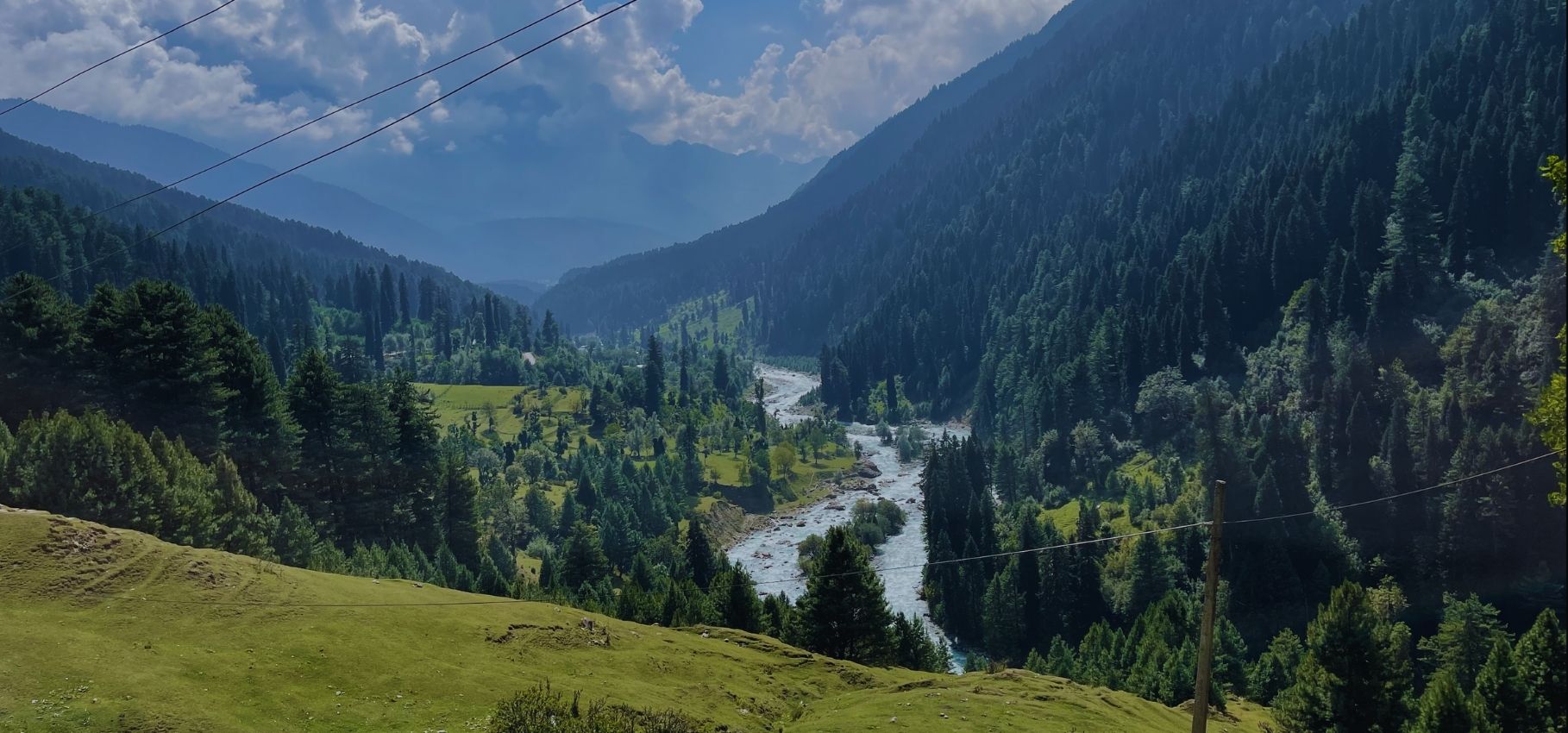
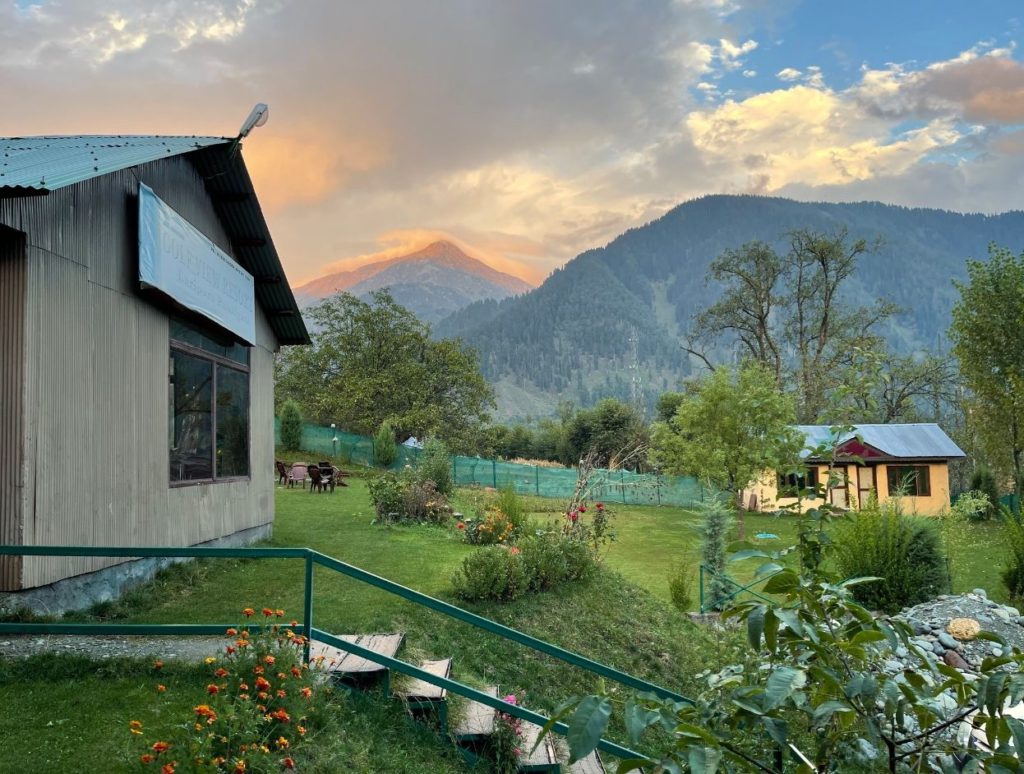
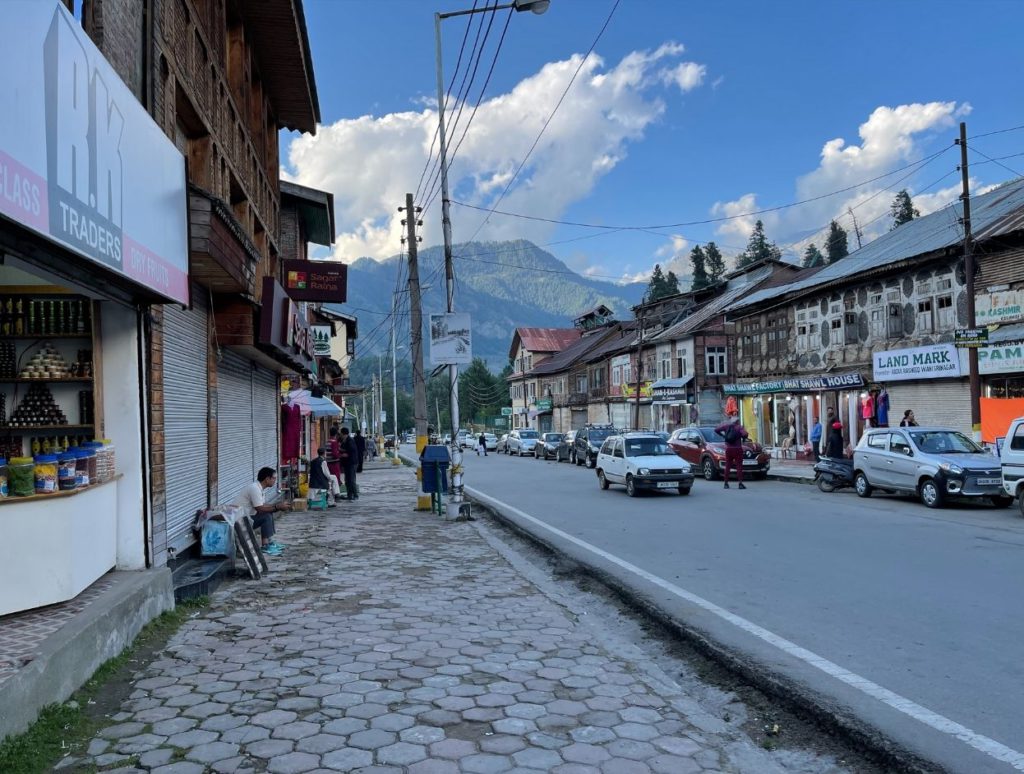
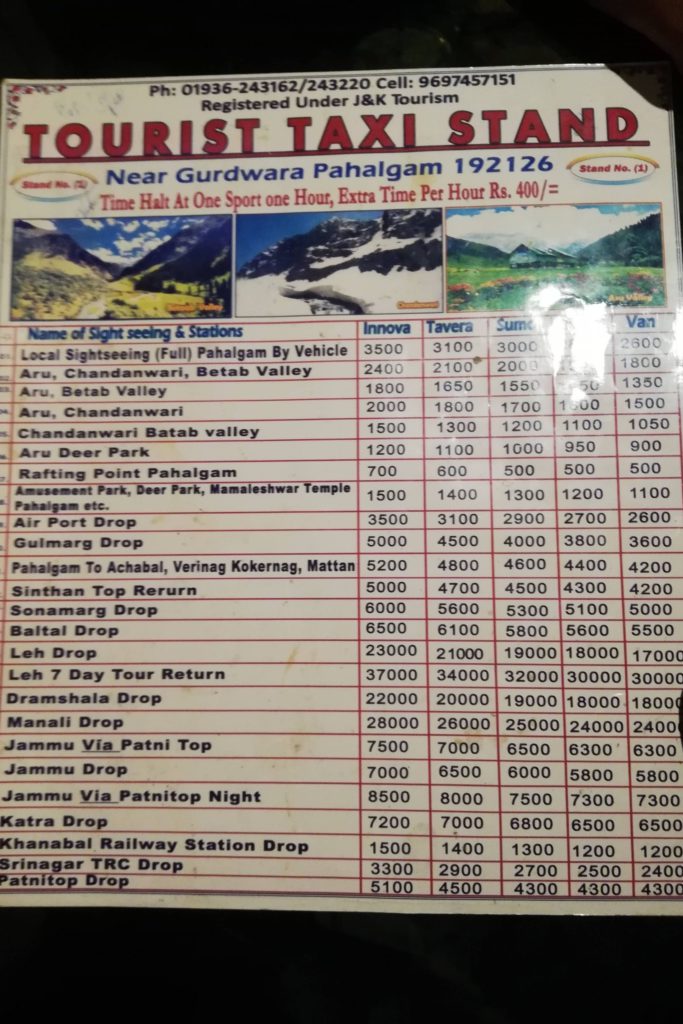
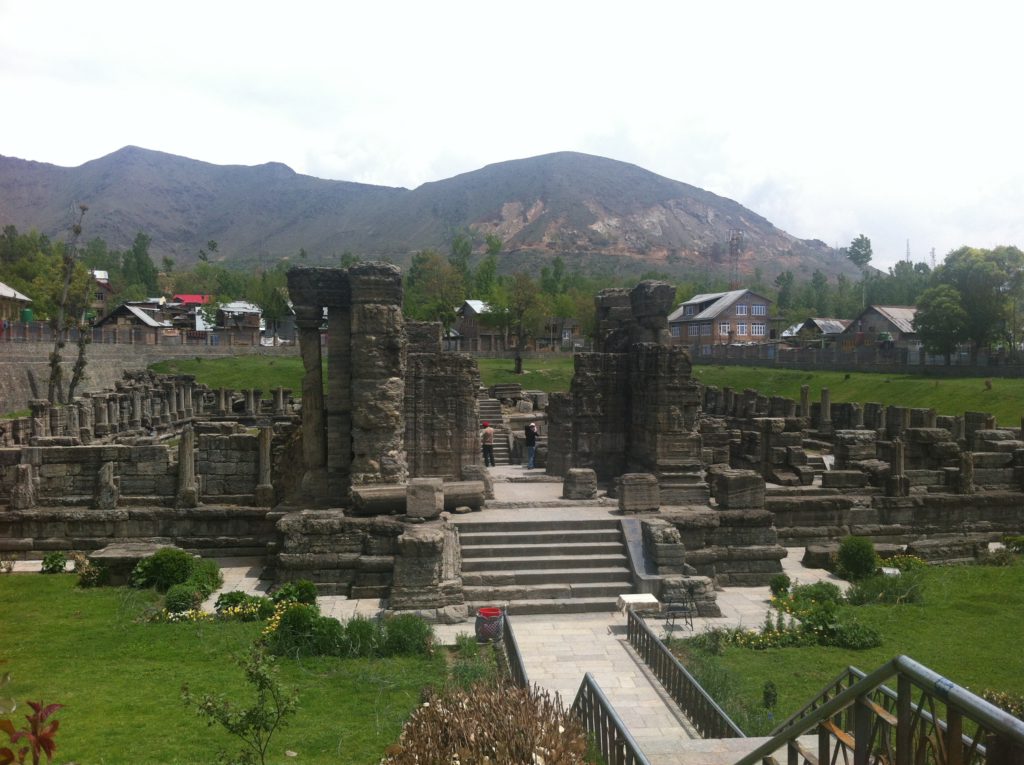
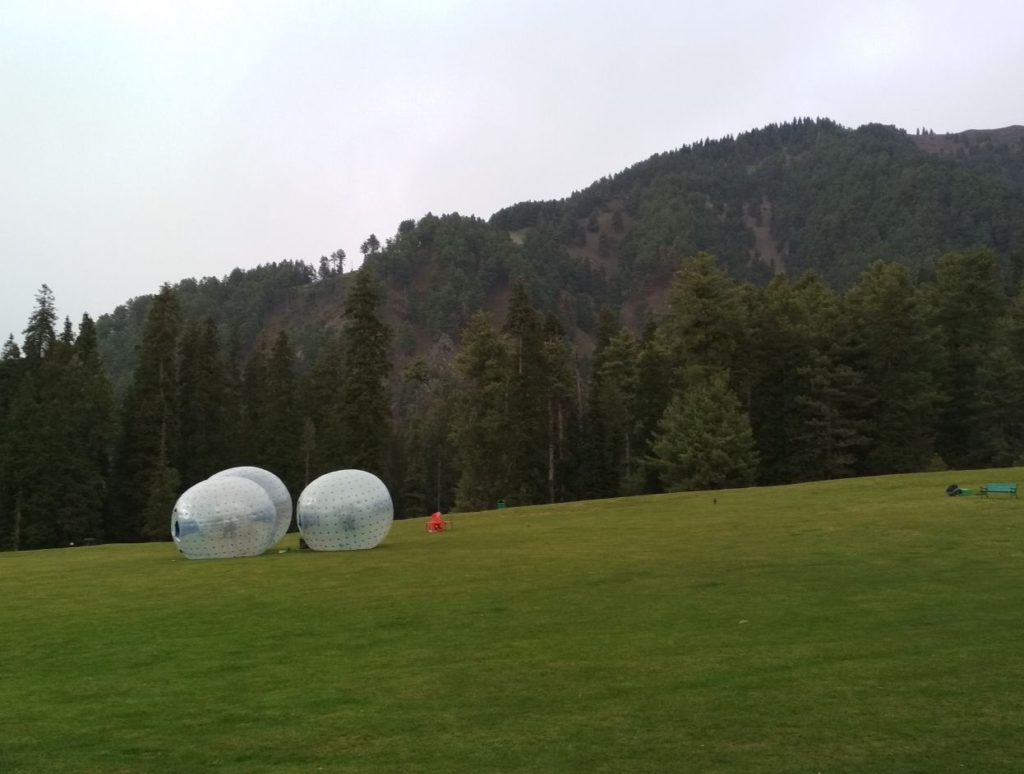
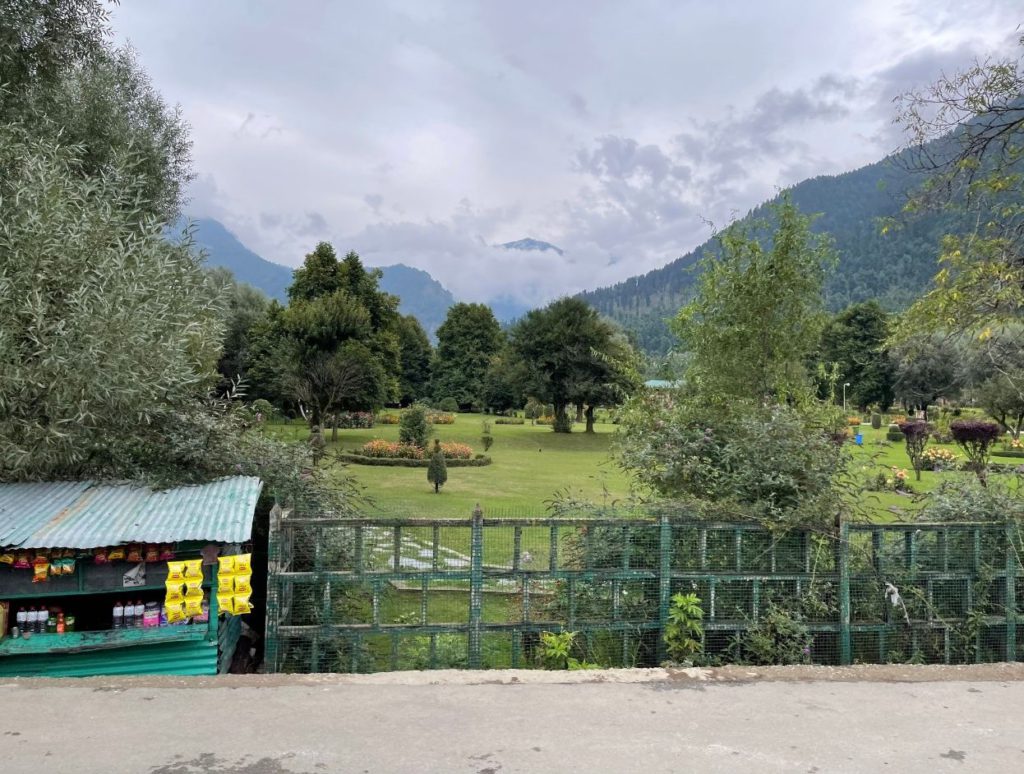
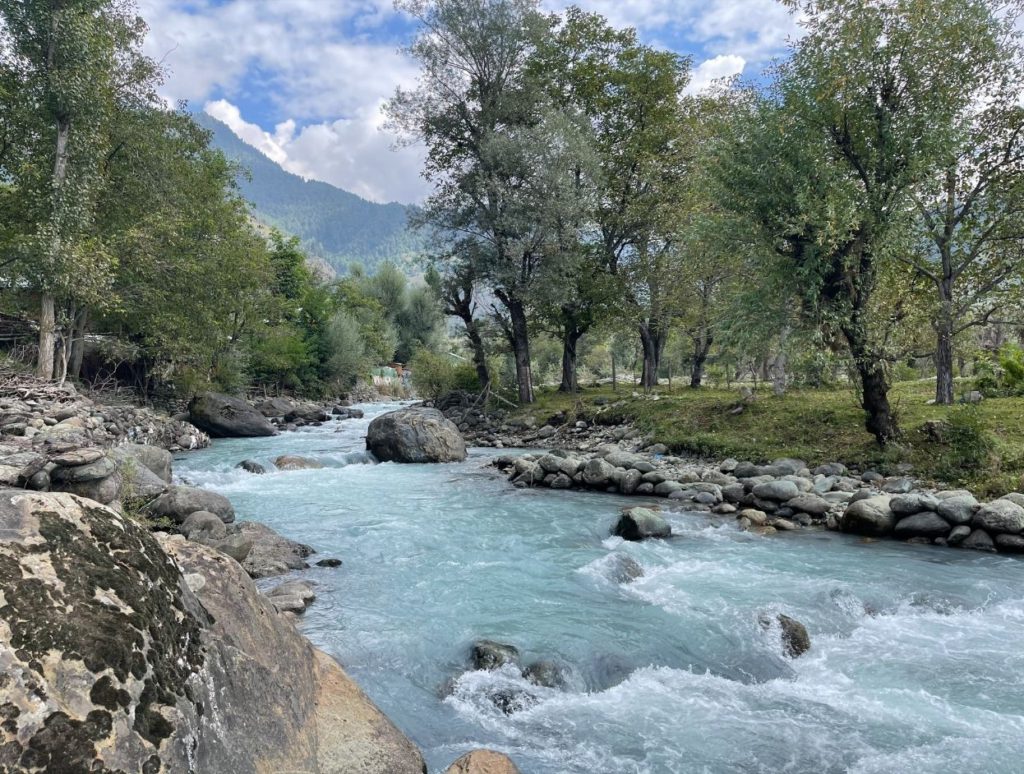
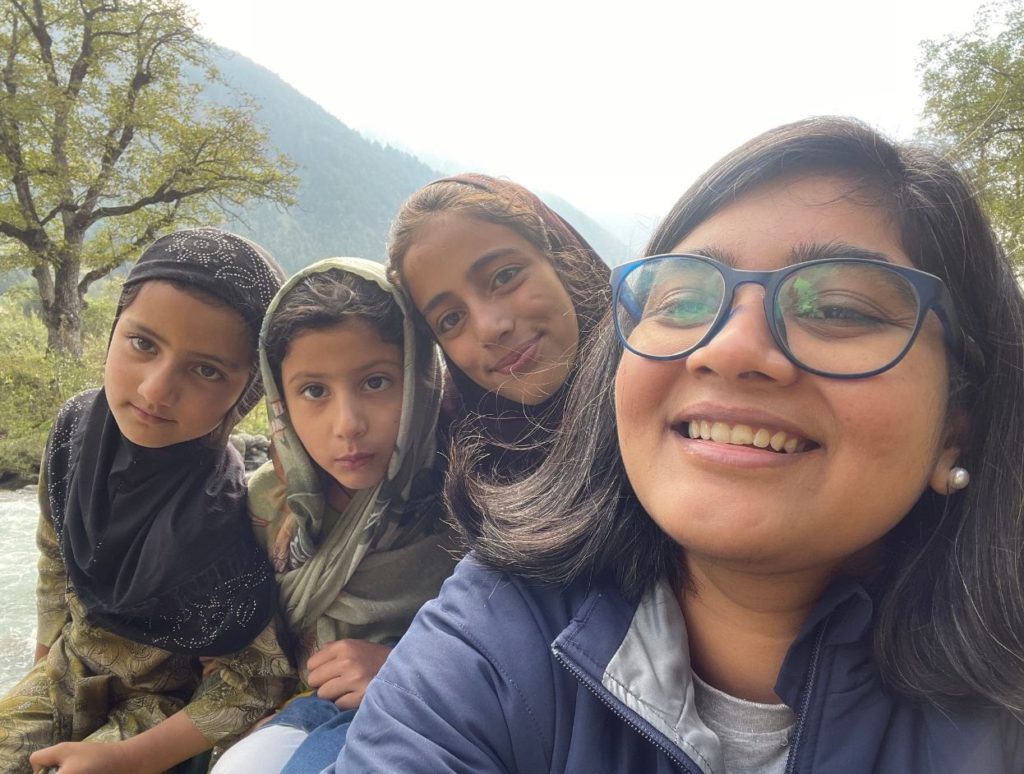
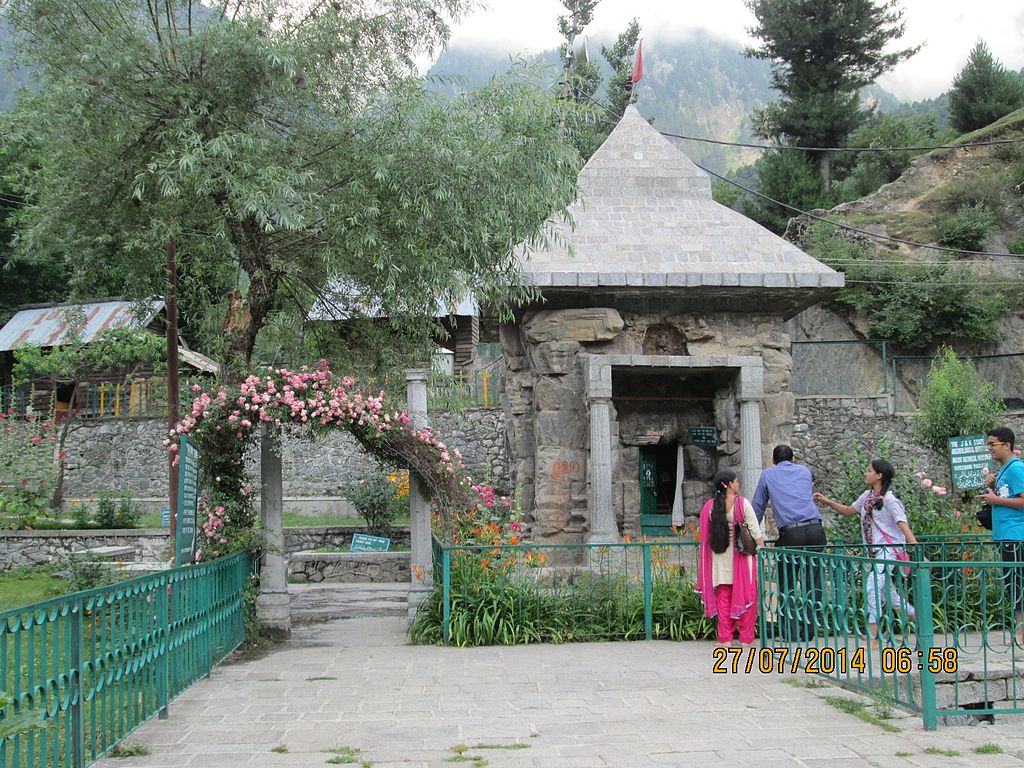
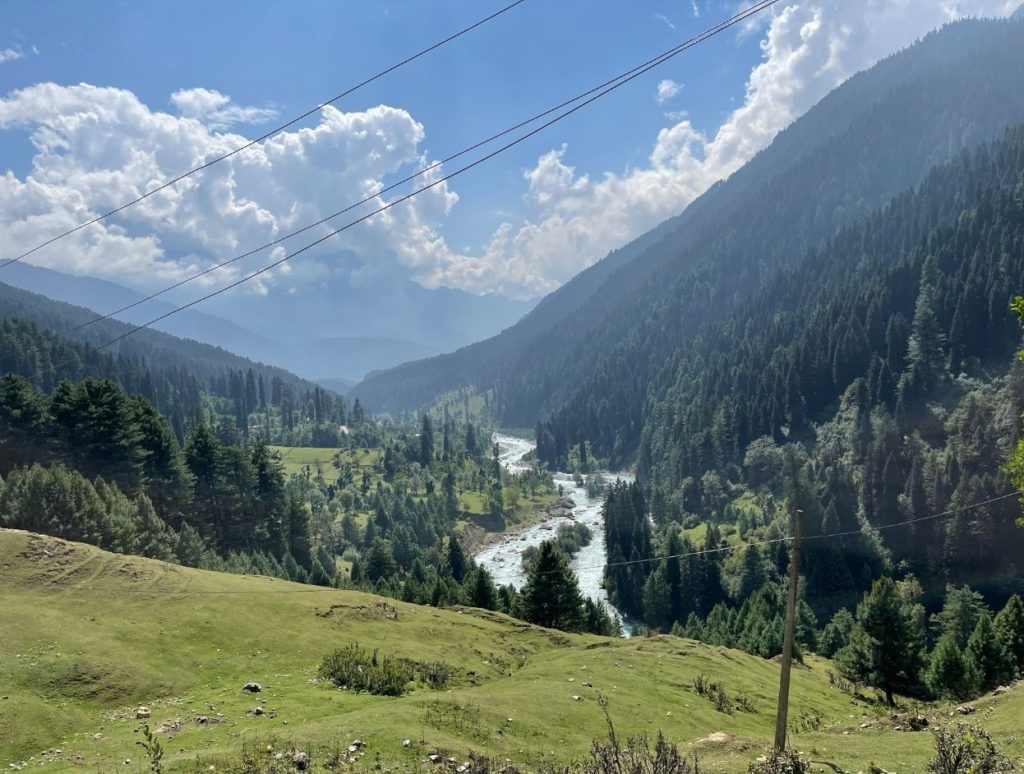
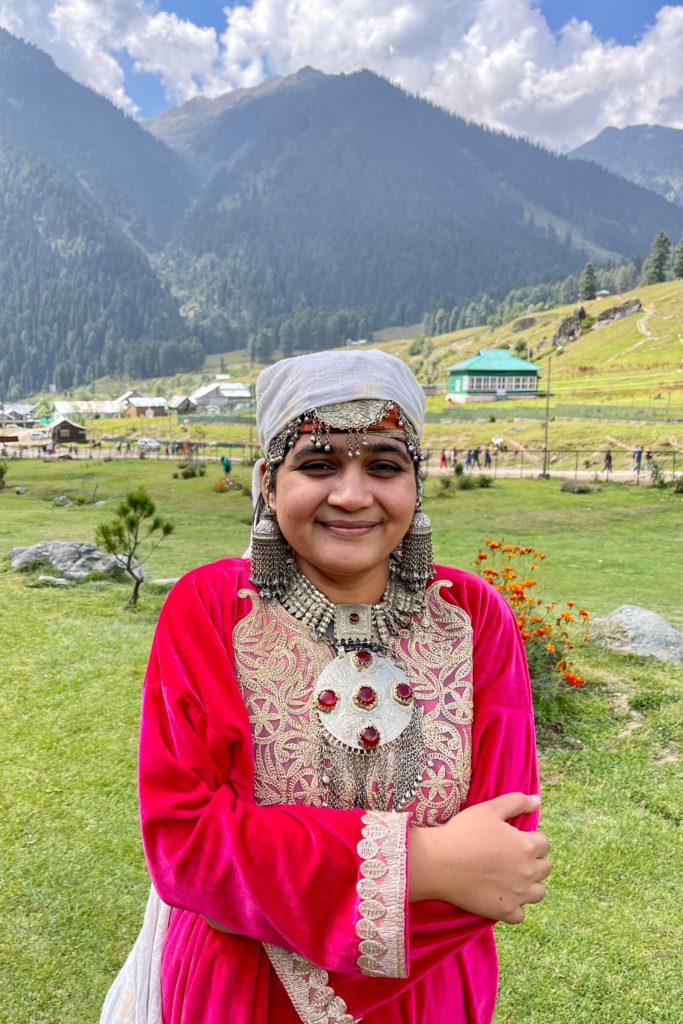
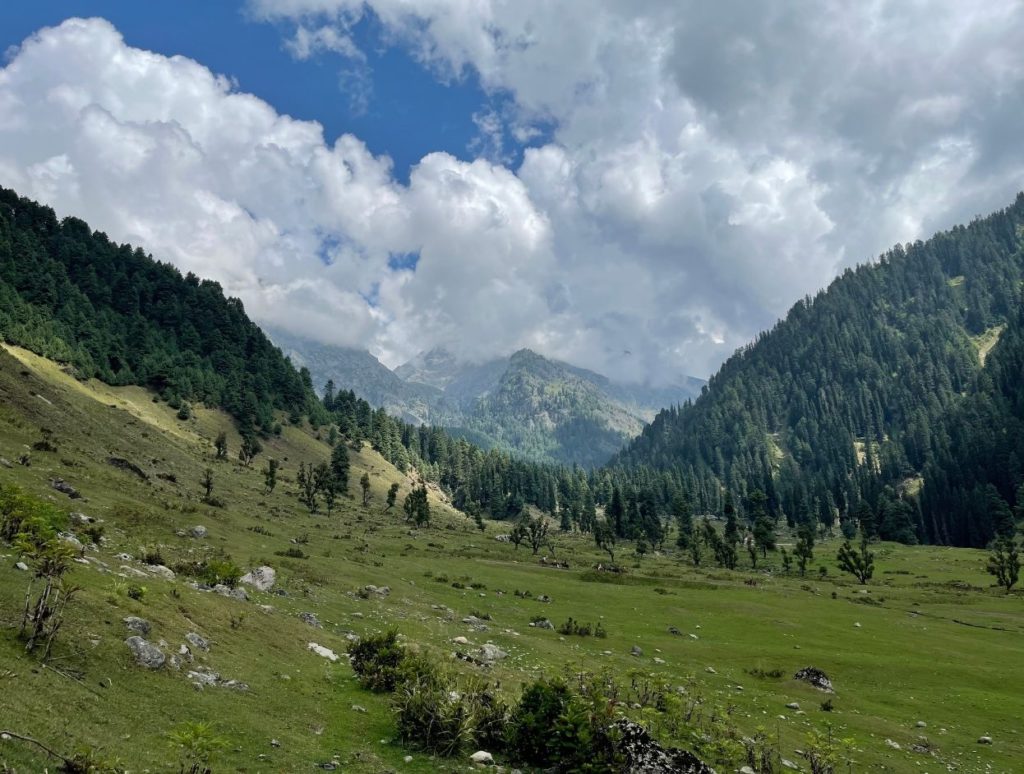
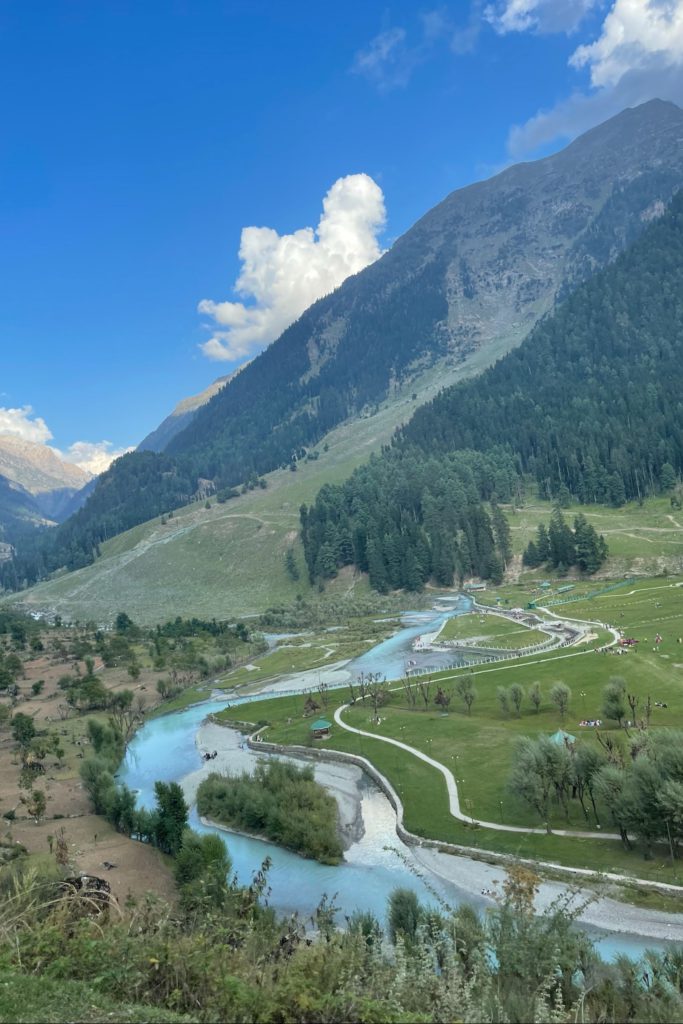
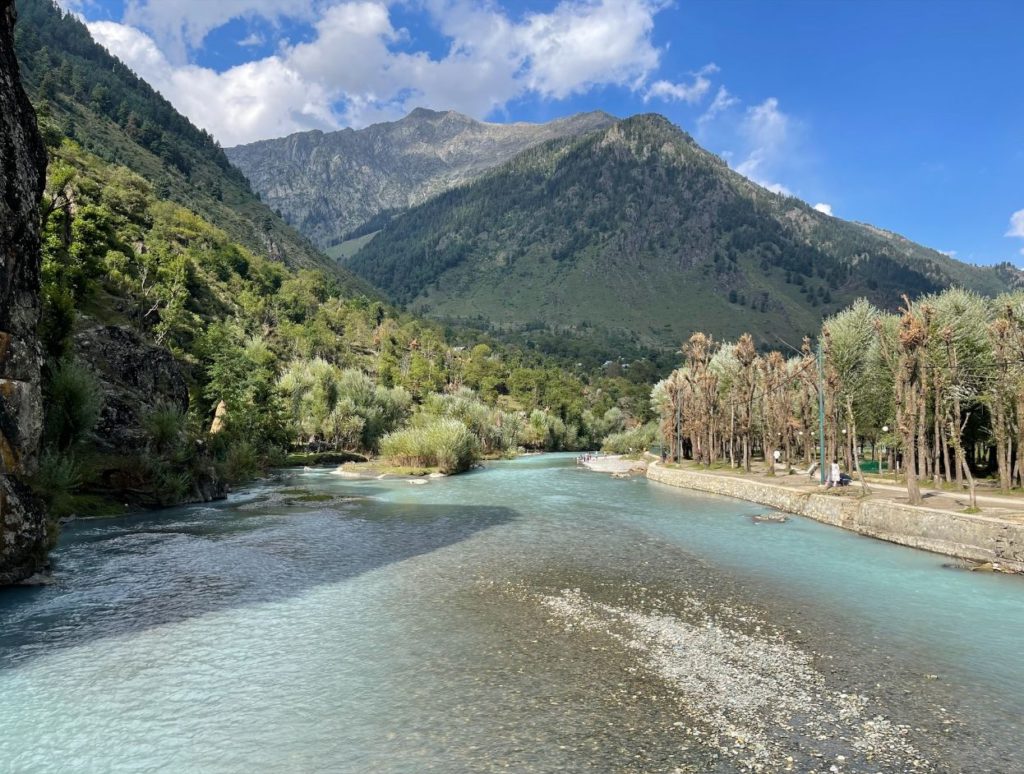
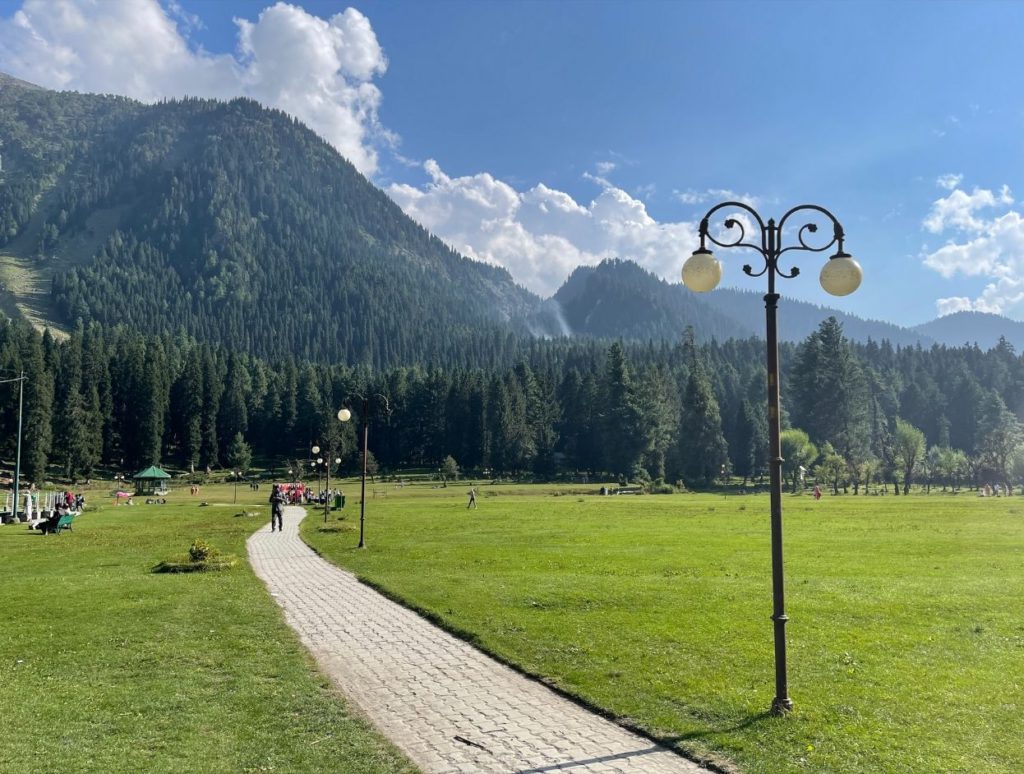
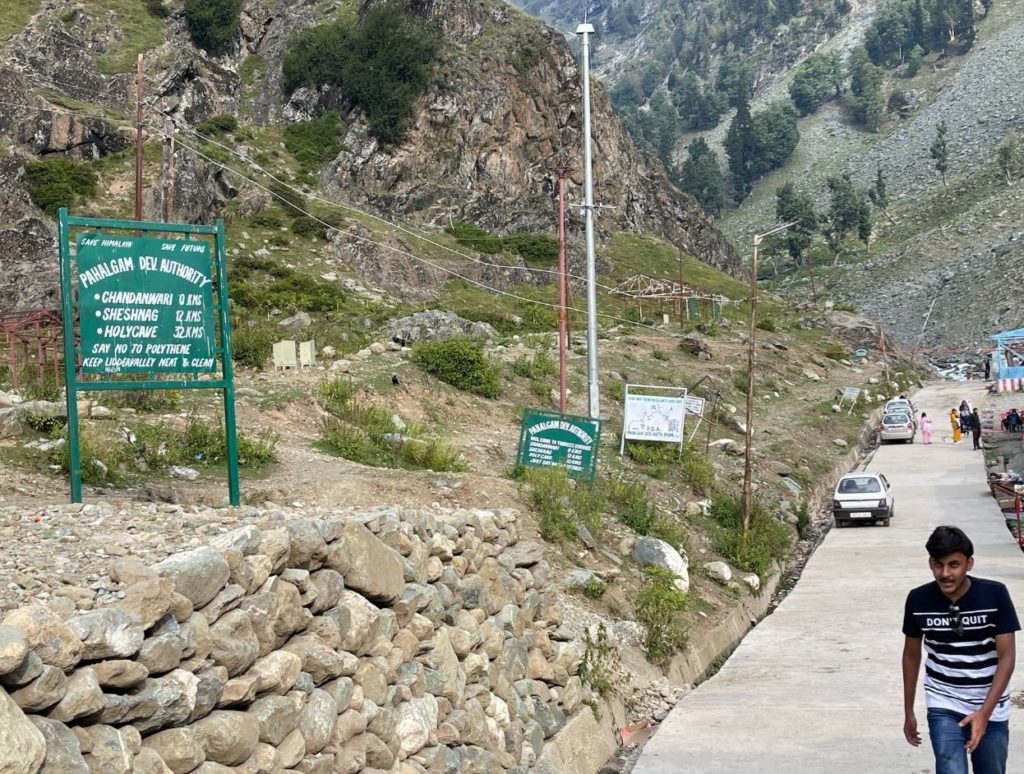
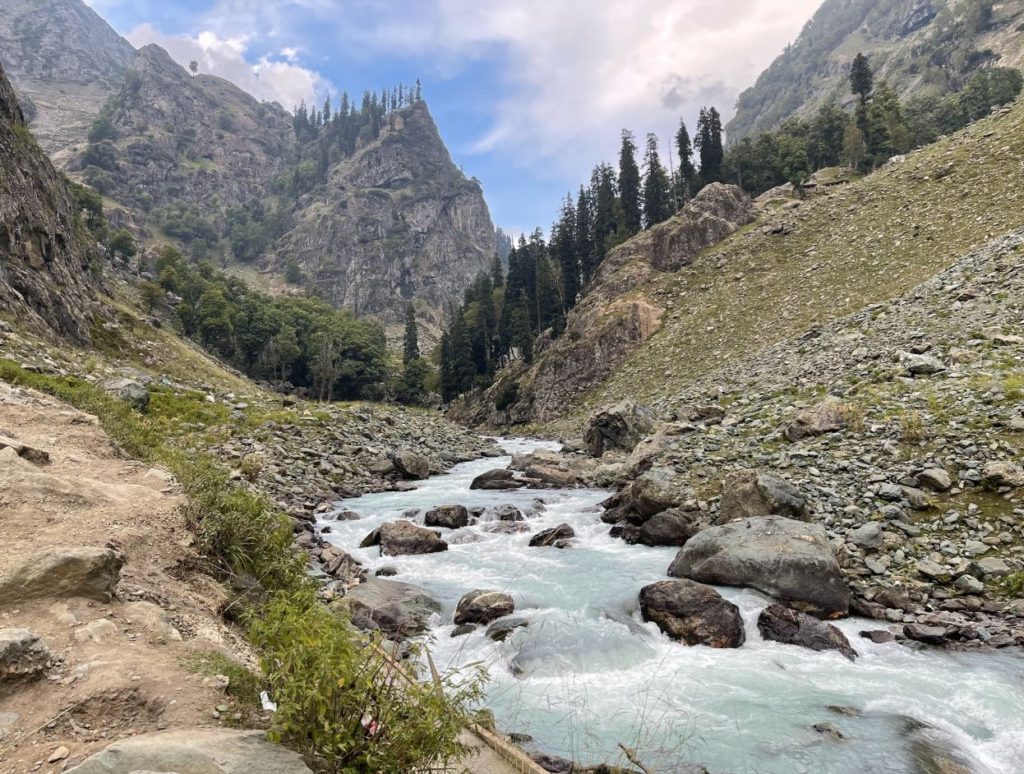
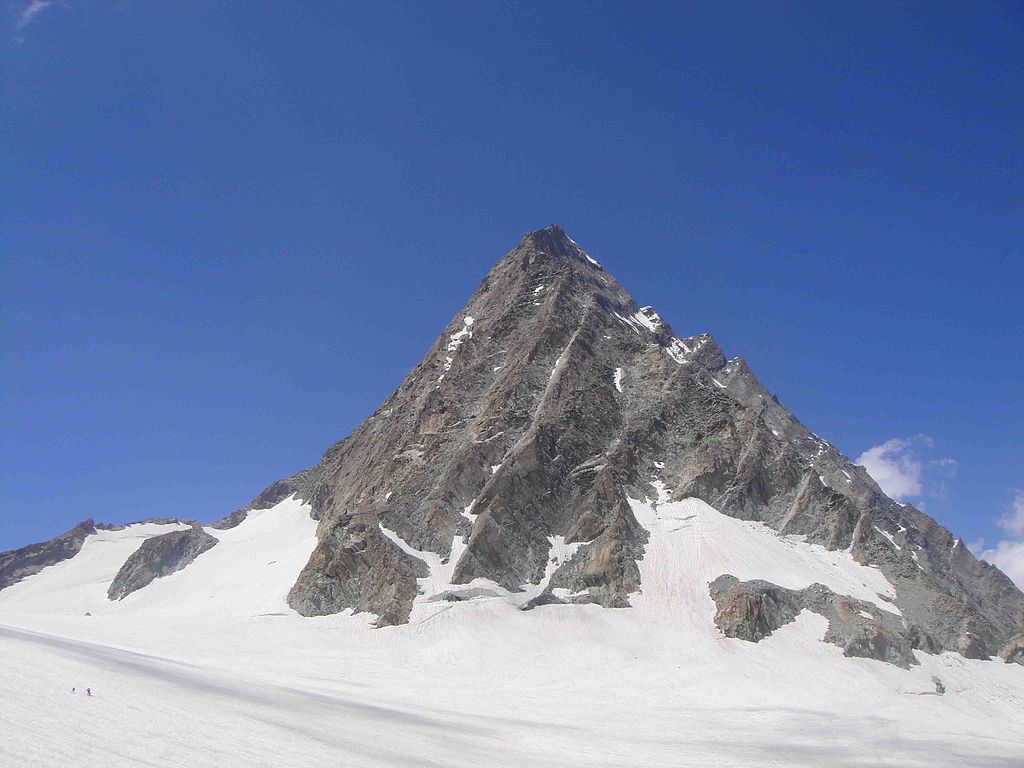
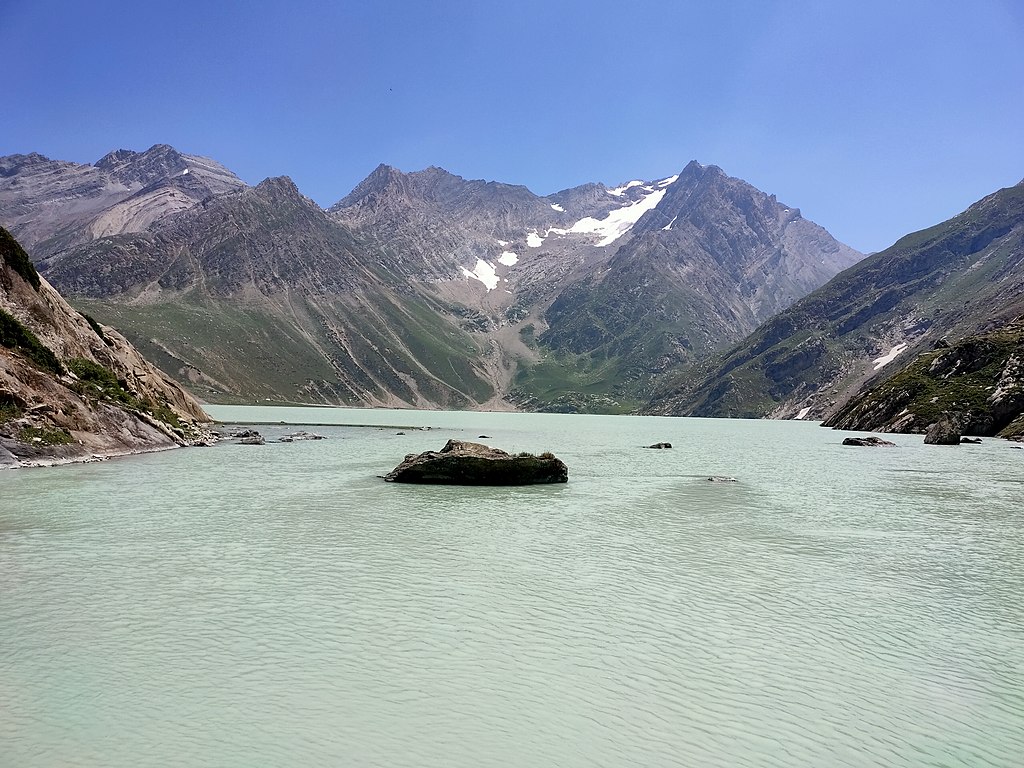
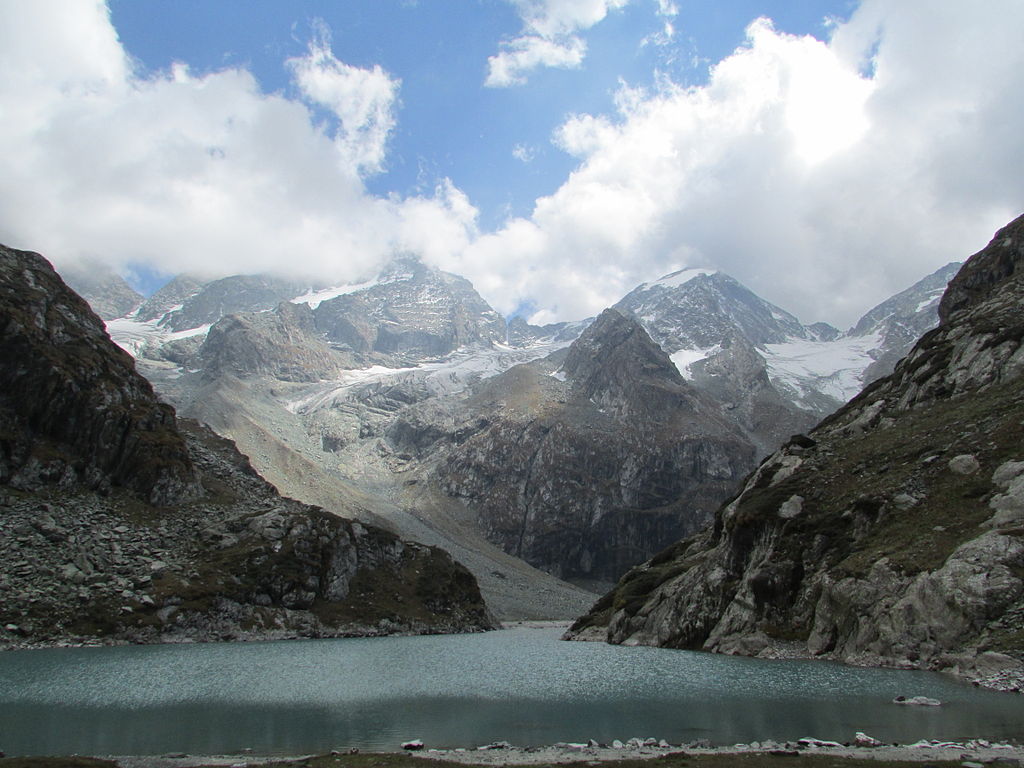
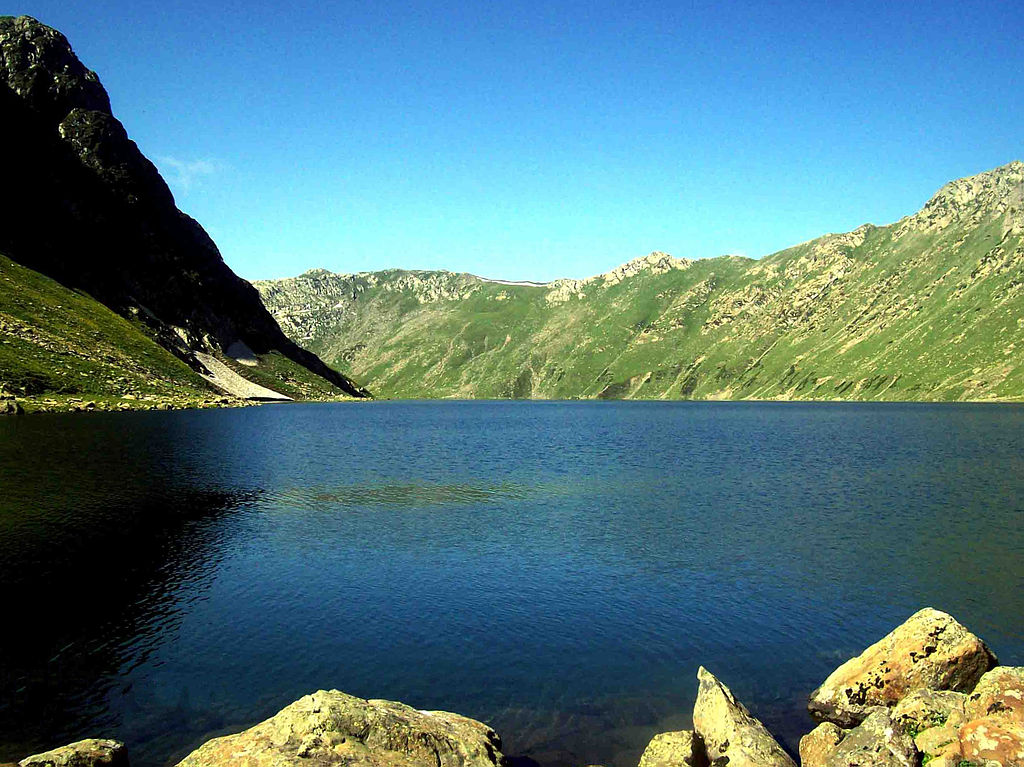
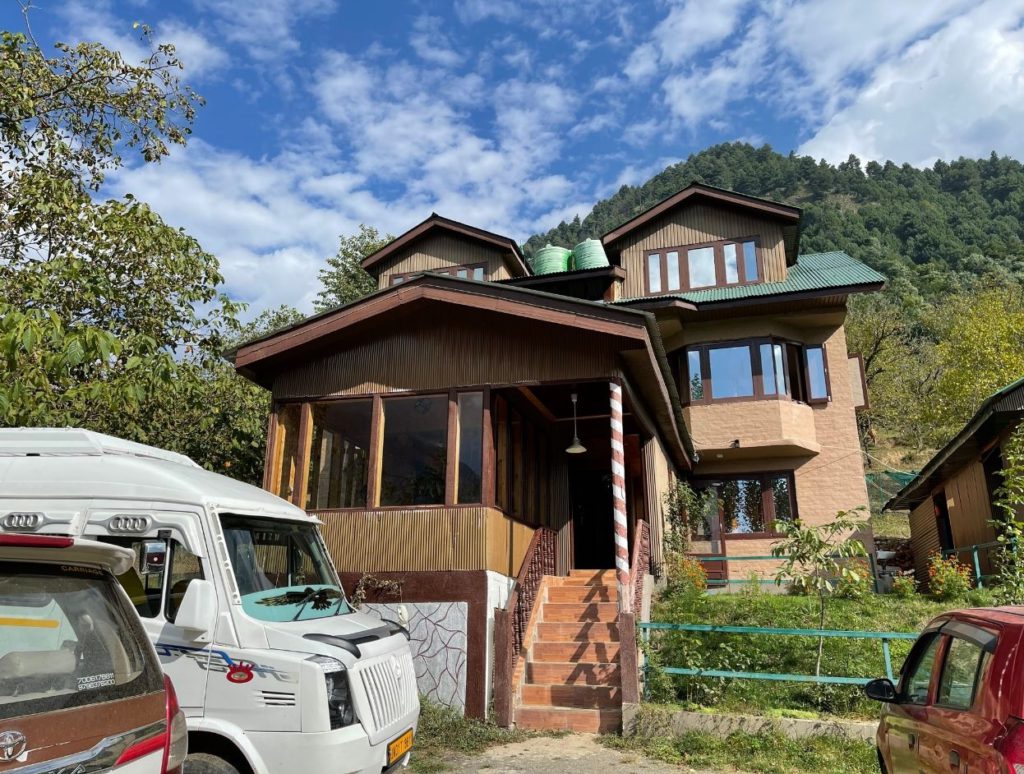
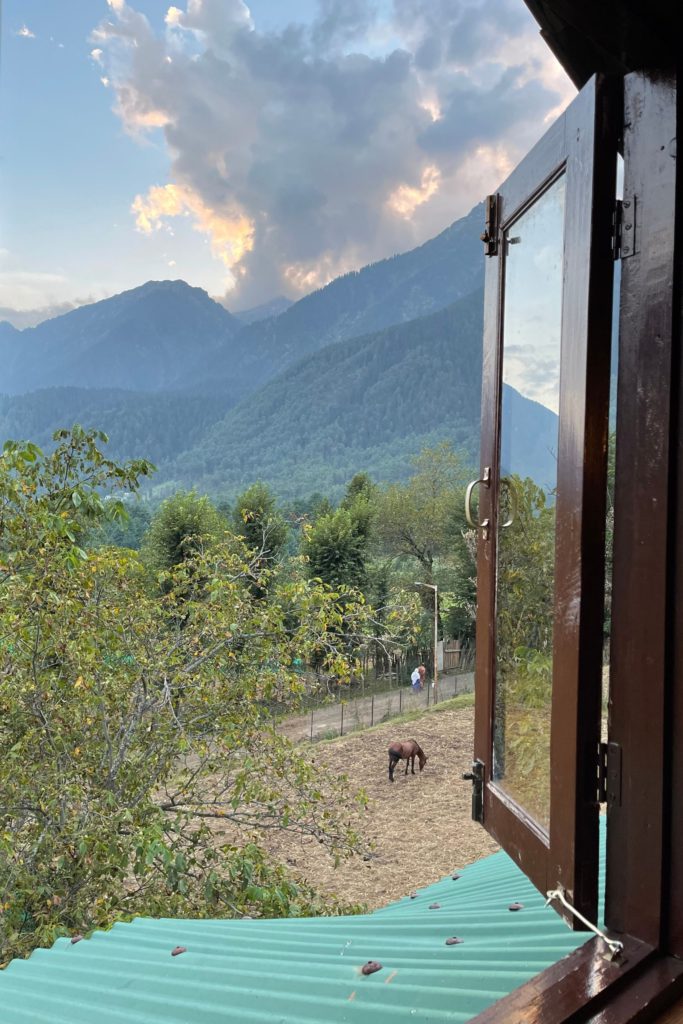
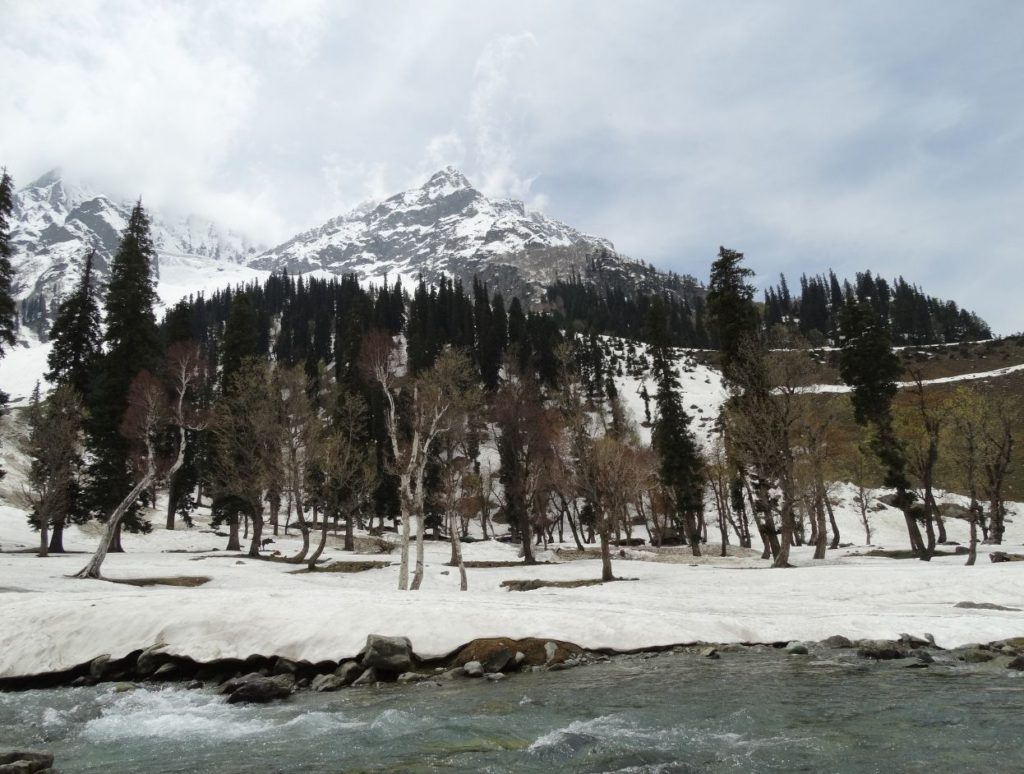
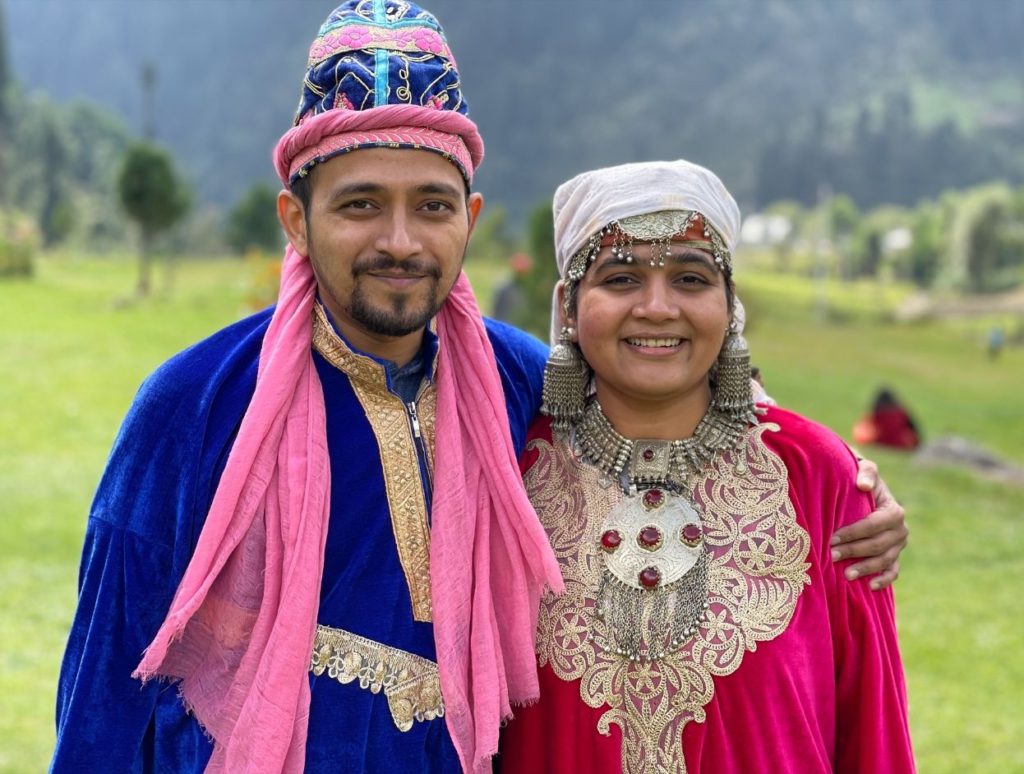

No Comments